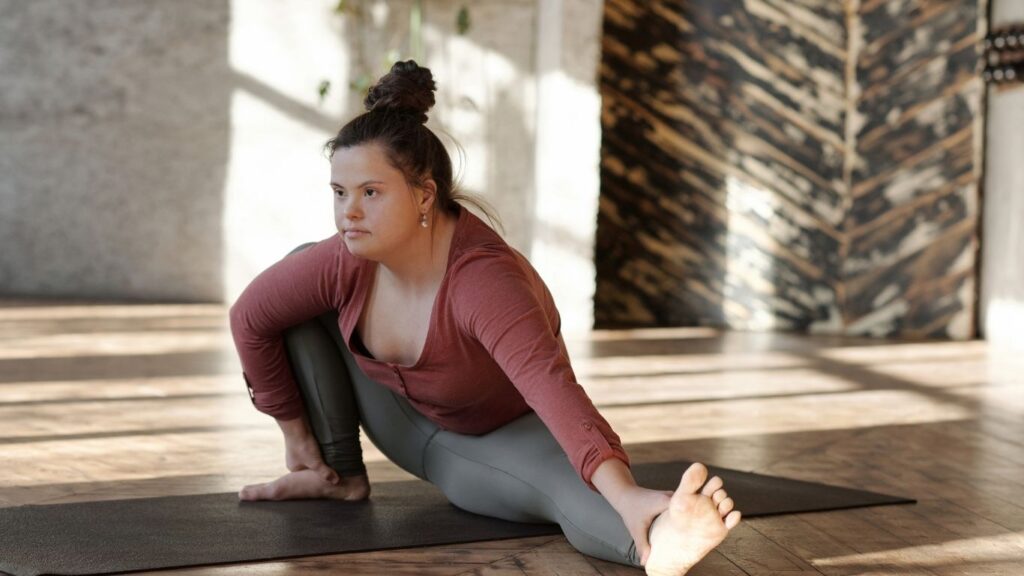Somatic stretching is a holistic approach to flexibility and wellness that emphasizes internal perception and relaxation of the muscles through mindful movement. Unlike traditional stretching, which often focuses on external poses and can lead to overstretching, somatic exercises encourage participants to tune into their body’s natural rhythms and responses. This method is particularly effective in teaching the body to release tension and restore its natural alignment and mobility.
The importance of somatic stretching in physical health is profound. It not only aids in alleviating pain by addressing muscle tightness and imbalances but also enhances body awareness, or proprioception. Increased body awareness helps individuals recognize and correct poor postural habits that may lead to discomfort or injury. For those suffering from chronic pain, somatic stretching provides a gentle, therapeutic way to manage symptoms and improve overall quality of life by fostering a deeper connection between mind and body.
Somatic Stretching: The Key to Pain Relief and Improved Body Awareness
Exploring the Basics of Somatic Stretching
Somatic stretching is a nuanced form of physical therapy that differs significantly from traditional stretching techniques. While traditional stretching often targets muscle elongation and flexibility by pushing the body to its limits, somatic stretching focuses on the internal experience of movement and muscle release. This method uses gentle, controlled movements to increase awareness of bodily sensations, allowing individuals to consciously release tension.
The core principle of somatic exercises is the integration of the mind and body to achieve relaxation and pain relief. This mind-body engagement is crucial because it helps to retrain the nervous system to release muscle tension that is often unconsciously held due to stress or past injuries. Somatic stretching encourages individuals to pay close attention to the feelings and responses elicited by each movement, fostering a deep, internal learning process that is more about sensing and less about performing.

These exercises are designed to reset the body’s sensory motor system, which is responsible for coordinating the body’s movements and postures. By focusing on the internal experience rather than on external outcomes, somatic stretching helps restore the body’s natural alignment and functional mobility, making it an effective approach for reducing chronic pain and improving overall physical health.
The Link Between Somatic Stretching and Pain Relief
Somatic stretching addresses the root causes of pain by focusing on the sensory-motor system, which integrates sensory feedback with motor output to control body movements. This approach helps to retrain and recalibrate this system, teaching it to release chronic muscle tension that often contributes to pain. By engaging in mindful, deliberate movements, individuals can alter their muscle responses, easing stiffness and discomfort.
For instance, for back pain, a beneficial somatic stretch involves lying on one’s back with knees bent and slowly allowing the knees to fall gently from side to side. This exercise helps relax and lengthen the lower back muscles, which are frequently tight and contribute to pain. For neck pain, a gentle rotation stretch, where one slowly turns the head to look over each shoulder, can help alleviate tension. These stretches encourage the muscles around the neck to relax while also increasing mobility.
By focusing on these types of movements, somatic stretching not only alleviates immediate discomfort but also contributes to long-term health by teaching the body more functional and pain-free ways to move.
Improving Body Awareness Through Somatic Stretching
Somatic exercises play a crucial role in enhancing proprioception, which is the body’s ability to sense its position, motion, and equilibrium. Through mindful and intentional movements, somatic exercises help individuals develop a heightened awareness of their body’s positioning and movements without relying on visual cues. This increased sensitivity allows for better control and coordination of movements.
The benefits of improved body awareness are extensive. Firstly, it leads to better posture as individuals become more attuned to the alignment of their body, making adjustments as needed to maintain an optimal stance. This awareness reduces the risk of developing postural issues and the resultant strain or pain.

Secondly, enhanced proprioception significantly lowers the risk of injuries. With better control and understanding of body mechanics, people are less likely to engage in movements that could lead to strains or other injuries. Lastly, for athletes, improved body awareness translates into enhanced performance. Athletes can fine-tune their movements for efficiency and precision, leading to better execution of skills and techniques in their respective sports, ultimately improving their overall performance.
Final thoughts
Somatic stretching offers a powerful approach to managing pain and enhancing body awareness through mindful engagement with the body’s sensory-motor system. By focusing on internal sensations rather than external performance, this technique helps individuals release chronic tension and regain functional mobility. The benefits extend beyond pain relief, improving posture, reducing the risk of injuries, and enhancing athletic performance through heightened proprioception. As we continue to explore and embrace these practices, somatic stretching can become a valuable tool in our overall health and wellness toolkit, empowering us to live more comfortably and effectively in our bodies.
Also read: 5 Reasons Why Starting Your Day Without Carbs Could Benefit You
